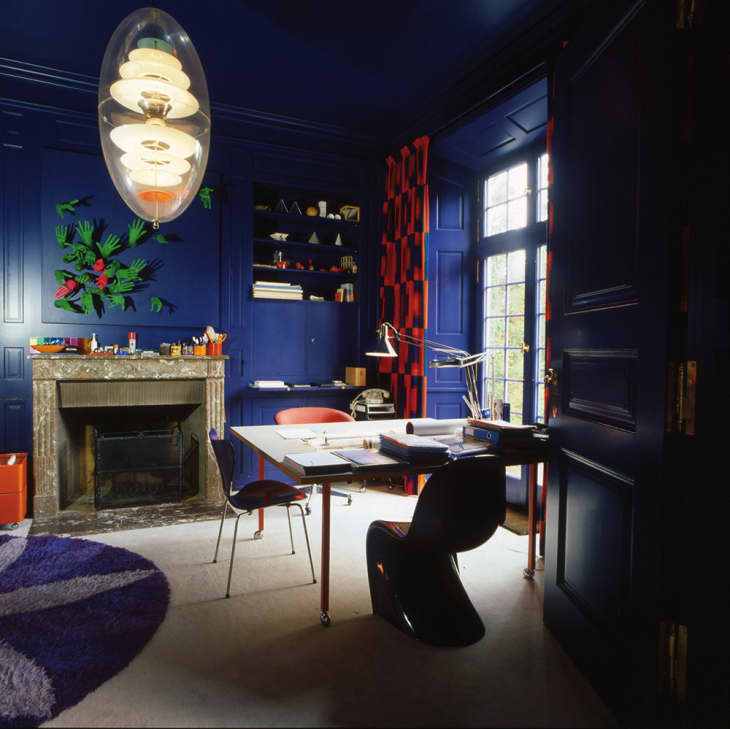Designer Verner Panton’s Home is Every Bit as Wild as You’d Expect
We celebrate Valentine’s Day a little differently around here. You see, the day of love, to us, is a chance to profess our adoration of furniture, designers, and basically anything that goes in the home. So this week, we’re sharing our passion for a handful of our favorite heralded furniture designers and the homes they outfitted and loved for themselves. Come along, people all over the design world, and hop aboard this love train.
For more content like this follow
In my search for photos from the homes of beloved furniture designers, I was delighted to run across these images of the home of Verner Panton, which are no less wild than you would expect from生活的创造者(though best known for his gravity-defying curved Panton chair). Bold colors, strange shapes, and unusual textures abound. It’s a full-on assault on the senses, in the very best possible way.
From 1972 to 1987, Panton and his family lived in this house in Binningen, on the outskirts of Basel, Switzerland. During that time, he transformed the public rooms of the home into a sort of showroom for his work. While the outside of the house was relatively tame, upon stepping inside it became immediately apparently that you were not in a normal home. The entry hall, whose walls and ceiling were completely covered in round lamps, gave guests a taste of the outrageousness to come.
The centerpiece of the living room was the living sculpture, an upholstered amoeba whose rainbow contours provided opportunities for climbing and lounging. (The piece is now housed in the Centre Pompidou in Paris, if you have the urge to see it, although I’m uncertain whether it’s on display—and whether climbing is permitted.)
The furniture elsewhere in the living room was only slightly more normal, and included upholstered staircases, a donut, and, of course, the famous living tower, flanked by a mirrored geometric wall treatment. Let’s return, for a moment, to the idea of the donut. My elementary school playground had some oversized sections of concrete pipe, stacked two or three high, that we used to lounge and play house in. (Did anybody else do this? I have no idea if this was normal.) The thing is, though, that sitting in a giant round thing was quite comfortable, at least when I was seven. I can see this being a form that a typical sofa would take in a not-so-alternate universe.
Elsewhere in the house there were other delights, like this dining room light fixture that wasn’t so much a light fixture as a lightinstallation, creating a sort of otherworldly landscape on the ceiling. According to the photos atVerner Panton.com, this room was once decorated in a much more restrained black and white palette. Despite all the odd shapes, I think that what’s most unusual about this house, from a modern perspective, is the colors. At no time since the ’70s has it been considered acceptable to bombard the inhabitant with so much concentrated, intense color. To our modern eyes, accustomed to minimal, all-white rooms, this may seem positively barbaric. But perhaps one got used to it? The inhabitants certainly seem to be enjoying themselves.
This room (the same one featured up top) came in a comparatively tame palette of deep blue, red and white, and featured furniture with a minimum of undulations, because I guess even Verner Panton was at a loss to redesign the tabletop. Here we see the designer himself, casually surveying his creation. I find myself wishing I could propel myself back in time, to experience in something fuller than pictures this house and its glorious excesses. Verner Panton died in 1998, but he lives on through his designs, especially the S chair, which continues to bring his refreshing, rule-breaking aesthetic to interiors everywhere.
Images are fromVerner Panton.com, viaDecor AidandA La Mode. You can read more, and see more of the home,at the Verner Panton website.

